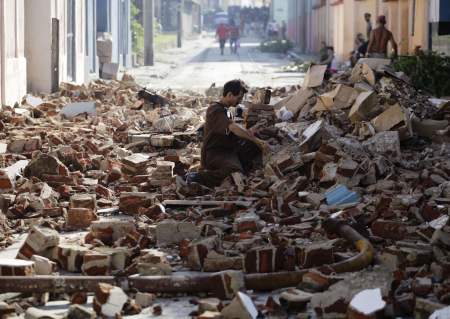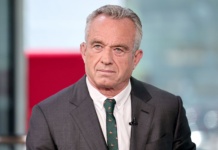
Cuba is reportedly set to approve the construction of a Catholic church on the island for the first time since the 1959 Revolution banned public religious activity as antithetical to Marxism.
The island’s Communist government has approved a permit for the building of a Catholic church building in Santiago de Cuba, second largest city to Havana. Demand for a new facility increased after Hurricane Sandy destroyed San Pedrito’s, then Santiago’s main place of worship, along with seven others.
“Catholics have been hearing Mass in the street since Hurricane Sandy destroyed their previous church, a termite-eaten wooden structure with a leaking tin roof,” wrote Katherine Backler of Roman Catholic weekly, The Tablet.
According to Ms Backler, Catholic residents of Santiago have begun planning the building project. Their main materials will be recycled from destroyed buildings. Metal beams initially used years ago to build a stage for the arrival of Pope Benedict XVI will be a key component in the new structure. The beams have been sitting in an empty lot since 2012, when the Pope arrived on Cuban soil.
About 57 percent of Cuba’s population is Christian. A common complaint among Cuban Christians is that of constant government surveillance and infiltration. Catholics continue to be the objects of persecution in communist Cuba. Members of one particular group of faithful Catholics – the Ladies in White, an anti-communist group comprised of the female relatives of political prisoners – are arrested at Sunday mass on almost a weekly basis. More than one hundred women dressed in white were arrested in July in one of the largest government crackdowns as they walked out of Sunday mass, praying for the victims of the March 13 tugboat massacre in which the Cuban government killed 37 men, women and children attempting to escape the island by drowning them in a makeshift marine vessel.
Some have commented on the growing influence the Roman Catholic Church is having on the Communist country, especially since long-serving dictator Fidel Castro stepped down from power and his brother Raul took his place. Last summer, the Brookings Institute featured a panel of experts in an event titled “The Role of the Catholic Church in Cuba Today.” The panellists were Orlando Márquez Hidalgo, editor and director of the Havana Archdiocese publication Palabra Nueva (or New Word), Eusebio Mujal-Leon, associate professor at Georgetown University, and Tom Quigley, former foreign policy advisor on Latin America and the Caribbean for the United States Conference of Catholic Bishops.
“Over the last two decades, the Catholic Church has come to occupy a unique space within Cuban society and has developed a growing dialogue with the Cuban state,” reads a description of the event on Brookings’ website, which goes on: “Actively interested in the ongoing economic reform process, the Archdiocese of Havana promotes debate regarding the role of the state and citizens in the economy and facilitates graduate training in business studies.”
Others are more critical of the recent move by the government to allow for a church to be built, noting that the state remains repressive overall.Pedro L. Rodriguez, executive director for the Miami, Florida-based Foundation for Human Rights in Cuba, believes it is “a public relations scam directed to project Raul Castro as a true reformer.”
“The Cuban government, it’s mainly interested in attracting investors and [giving] the impression that the Cuban government, it’s evolving into a less totalitarian experiment,” said Rodriguez, adding: “Unfortunately, the Cuban Catholic Church has been very passive in regards to confronting, peacefully of course, the government.”
According to Rodriguez, there have been thousands of documented arrests over the past couple years of dissidents in the country.
“These dissidents are usually arrested for a short period, two to three days, and then released 15 or 20 kilometres from their homes so they have to find their own means of transportation or simply walk back home,” he says.
This climate of repressiveness has also been noted by Amnesty International. In a press release from last September, Amnesty Special Adviser Javier Zúñiga noted the anti-dissent laws of the Communist state.
“The Cuban authorities seem to be using every trick in the book to punish those who dare to speak up about human rights,” said Zúñiga. “They are even using a law that punishes potential offences on account of ‘antisocial behaviour’ to imprison political dissidents, independent journalists and government critics.”
Dionisio Garcia Ibanez, the archbishop of Santiago de Cuba, told the BBC in a recent interview that he had a positive outlook for the permit. “I think it’s not only about improving attitudes to the Catholic Church, but to churches in general,” said Ibanez, adding: “I think there’s a better understanding of religious affairs, so we hope it won’t only be this church that we build. We hope there’ll be more.”
Construction for the new church building will be privately funded in part via St. Lawrence Parish in Tampa, Florida, many of whose members are Cuban exiles and their offspring.








